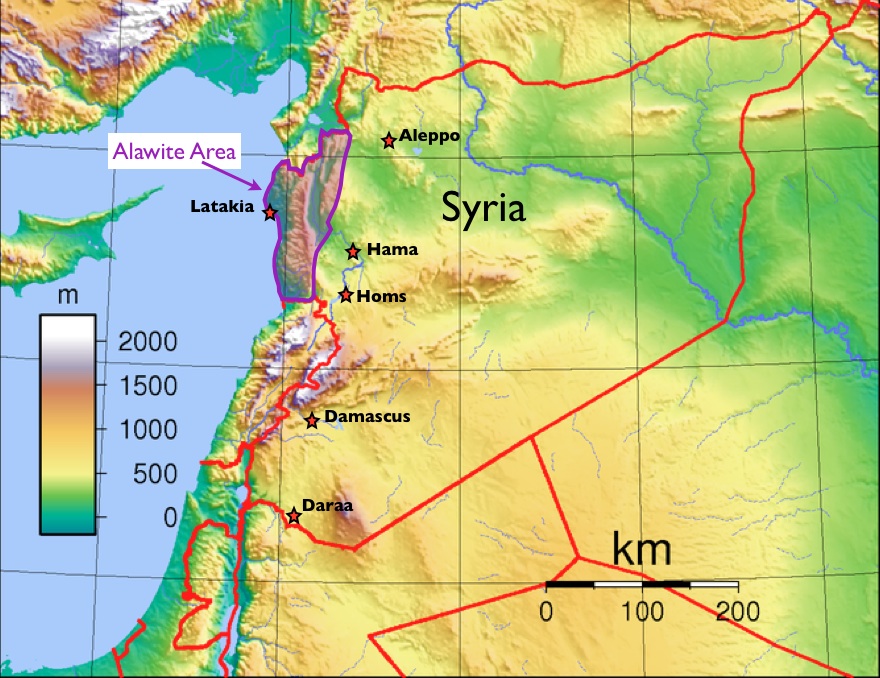 By Roula Khalaf
By Roula Khalaf
The whereabouts of Bashar al-Assad have become the source of much speculation since the bomb blast that struck a spectacular blow to his inner circle on Wednesday.
As soon as the explosion was revealed activists claimed that the Syrian president had also died, only to be contradicted by others who insisted that he never attended the weekly security meeting hit in the attack.
By Thursday morning, fresh reports emerged that the president was in Latakia, the coastal stronghold of the Alawite community, the minority sect to which the Assad family belongs, and on which it has heavily relied in the battle against a mostly Sunni revolt.
But amid an intense psychological war waged by both the regime and the opposition this week – the first to try to show loyalists, not least the Alawite community, that it remained in control, the second to show the regime’s disintegration – western diplomats said the embattled president was not at a point of abandoning the capital. Such a move would mean his regime, at least in its present form, was in effect over.
Mr Assad is attempting to hang on and lashing out against his opponents. His officials are telling their regional allies that they can overcome the massive shock of a brazen rebel penetration of the regime’s security umbrella. They will, they say, in a few days, drive the rebels out of the capital and reassert their control.
The sectarian nature of the Syrian leadership and the viciousness of the campaign it has waged against the Sunni population means that Mr Assad is likely to fight until the end. If he fails to impose his authority over Damascus, he could fall back on an Alawite militia to pursue a desperate bid for his family’s survival.
Indeed, among the scenarios envisioned by diplomats and analysts is a disintegration of the state into an even bloodier civil war in which the Alawites, for whom this is now an existential struggle, regroup in their strongholds on the coast and continue their war.
“The regime is shedding layer after layer of what made it a state. The risk now is that it will just shed that last layer that still makes it different from a large militia,” says Peter Harling, Syria analyst at the International Crisis Group.
Since the start of the crisis, western governments have urged opposition groups to reach out to the Alawite community, an offshoot of Shia Islam who make up around 12 per cent of the population but whose members occupy a majority of the middle and top ranks of military and security institutions.
The Assads, however, have held the Alawites hostage. Haunted by historic anxiety over Sunni domination – a once impoverished community that had been persecuted by Sunni regimes – the Alawites were empowered after the takeover of the late Hafez al-Assad, father of the current leader who became Syria’s first Alawite president in 1971. Encouraged to integrate within the Sunni community, the Alawites’ traditional tribal and religious leaderships were weakened and they became the security pillar of the Assad regime, packing the middle and top ranks of military institutions.
Since the eruption of the Syrian uprising in March 2011, Mr Assad has deliberately depicted the crisis as an extremist Sunni campaign to seize power, and enlisted the Alawite community in his fight.
In a pattern that has been repeated across the country, shelling of towns and villages are often accompanied by attacks by the shabbiha, the Alawite pro-government militia. The fear of many Alawites today is that the collapse of the Syrian regime will unleash harsh retribution against the community, a nervousness reinforced by evidence of some sectarian attacks on minorities.
For months now, opposition activists have been claiming that the regime’s long-term survival plan is to create an Alawite enclave. They say the military strategy has been designed to secure religiously mixed areas around the cities of Homs and Hama that could be connected to the coast, and crucially also to nearby Lebanon. The displacement of population in the fighting has meant that more Alawites have moved to the coastal areas, and more Sunni have left the mixed areas in central Syria.
Emile Hokayem, Beirut-based analyst for London’s International Institute for Strategic Studies, is among those who question whether an Alawite militia could be sustainable. The Assad regime would have little strategic value for its allies, be it the Russians or the Iranians, or even Lebanon’s Hizbollah, if it ended up defending an Alawite enclave. If that happened, Mr Hokayem points out, it would be solely focused on survival – and on revenge.
Financial Times
Leave a Reply
You must be logged in to post a comment.